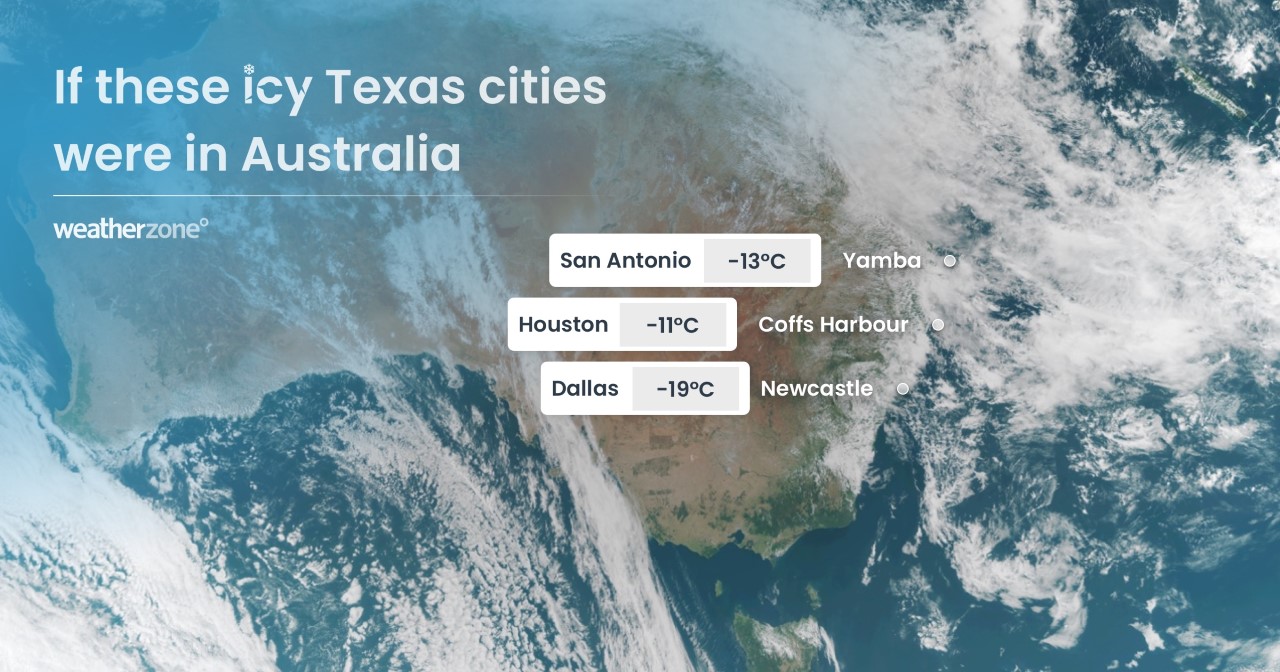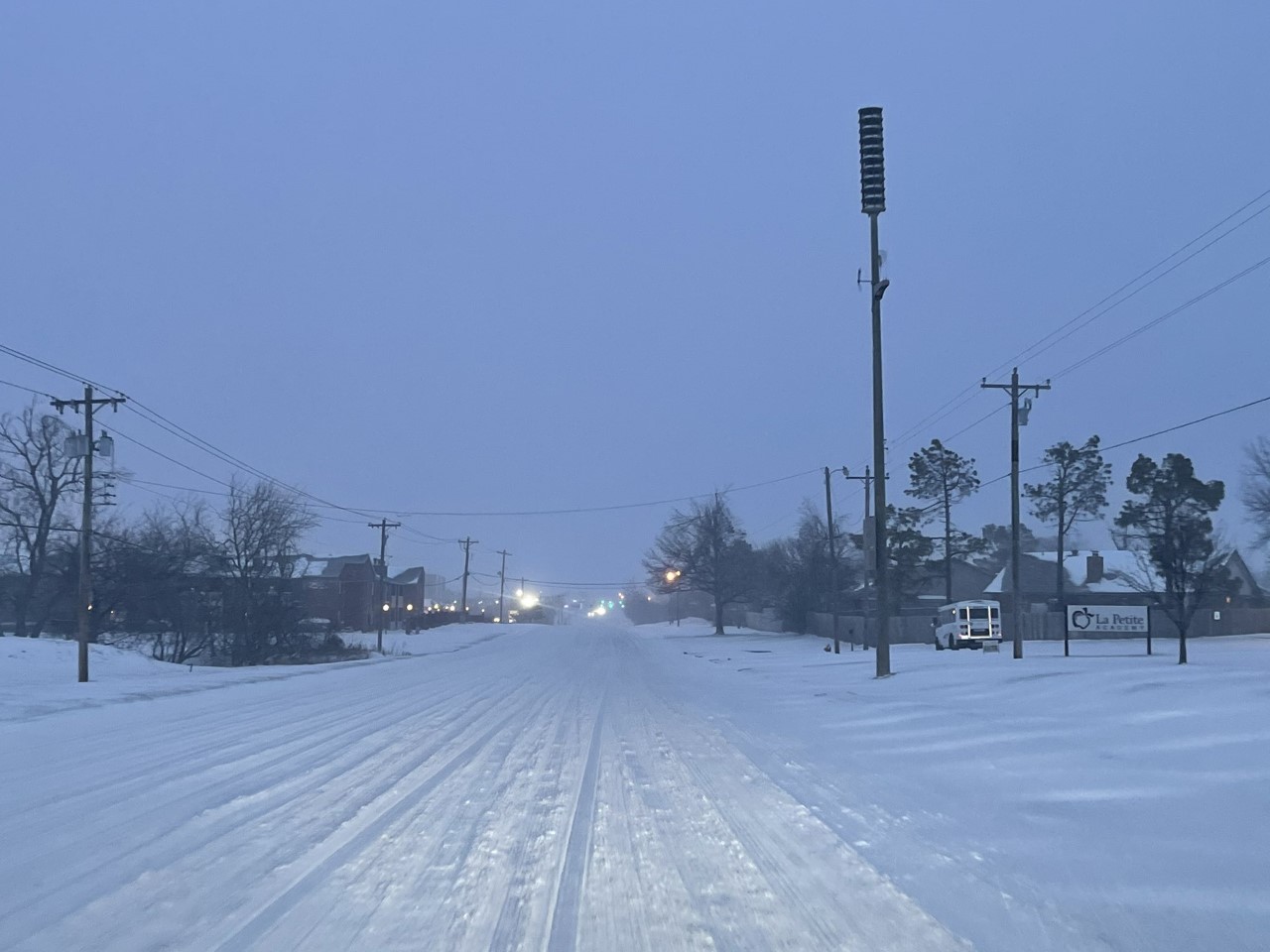If the Texas cold snap had happened in Australia...
This is the map which illustrates just how cold it has been in the US state of Texas this week, in terms all Australians can relate to.

Image: We've put three Texas cities, and the coldest temps they experienced this week, on the same latitude they'd be if they were in he Southern Hemisphere, with Aussie locations on similar latitudes.
This week's record-setting cold snap has brought an Arctic airmass to regions of America so far south that they are affected by hurricanes in the summer.
As we explained at the start of the week, it's because of pools of cold air that are usually bottled up over the Arctic, but which occasionally escape and spread towards the south, in a distortion of the phenomenon known as the "polar vortex".
All that snow you've seen on the streets of places like Houston this week? If the same thing happened at coastal locations on Australia's east coast, you'd be playing street ice hockey in places like Coffs Harbour on the NSW mid-north coast.

Image: Bit of a change from the usual baseball, basketball and American football. Source: Ryan Fulton.
And Australian towns on the same latitude as Newcastle would be minus 19, as the city of Dallas was this week (Dallas is 130m above sea level, but that's not high enough above sea level to lower its temperature more than a degree or so).
So why does this never happen in Australia?
Many Australian towns and cities have a similar latitude to places where it has been brutally cold in America this week. Why do Antarctic weather systems never pull the same trick on us?
There's a simple answer – land. Or in our case, a lack of it between us and the South Pole. As Weatherzone meteorologist Ben Domensino explains:
"The US gets much colder than Australia because they are connected to the Arctic by land. Cold polar air can easily travel across Canada and into the US without warming up too much.
"By contrast, Australia is separated from Antarctica by the vast Southern Ocean. This large water body causes air to warm up a lot more as it moves into the mid-latitudes."
So even though we get cold Antarctic blasts from time to time in winter - indeed our snow seasons rely on them - the air still warms significantly over the Southern Ocean en route to Australia.

Image: This road is actually in Oklahoma, just north of Texas. But in latitude terms, that's still the rough equivalent of the streets of Albury/Wodonga being buried this deep. Source: Brandon Sullivan.
During surges of Antarctic air, snow will fall at temperatures around zero or just under high in the Australian Alps. But you can rest assured, it will never, ever be minus 19 in Sydney or Melbourne or anywhere near the coast.
And all because we have ocean south of us while the USA has Canada above it. No wonder those Canadians are so apologetic by nature.
Meanwhile, the Texan power crisis continues, though it should ease as conditions look to warm up significantly in the coming week.